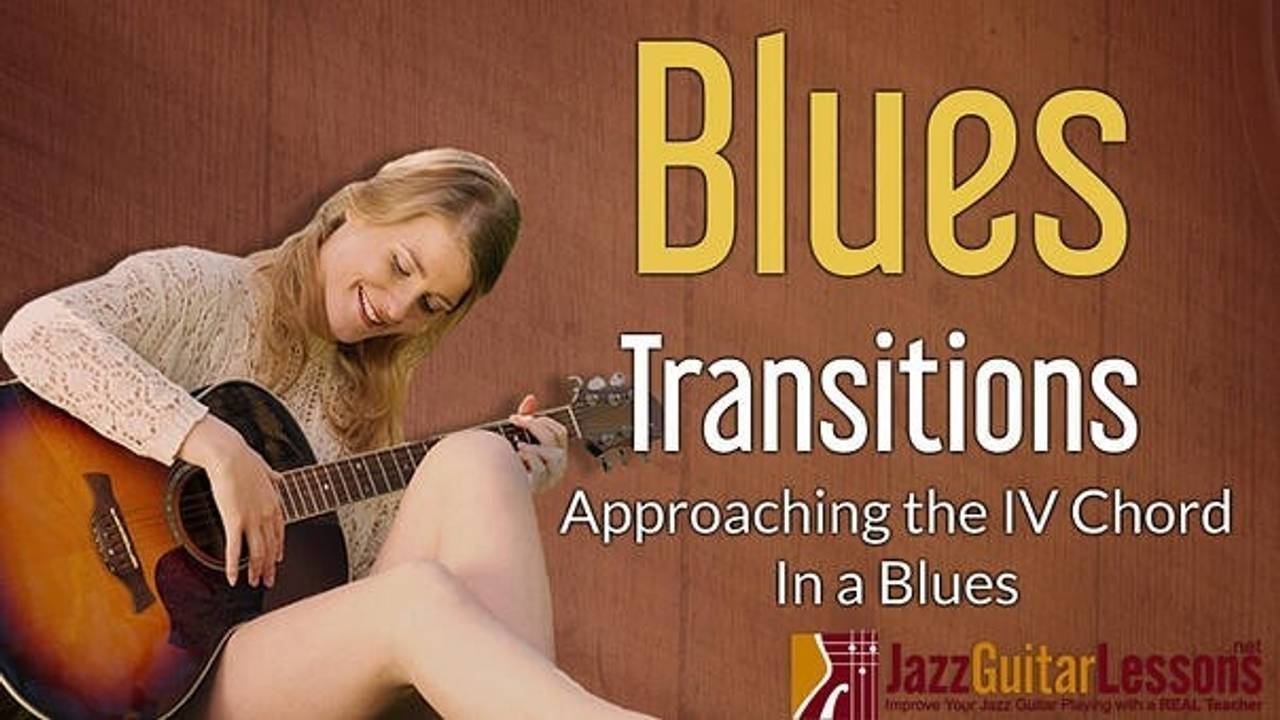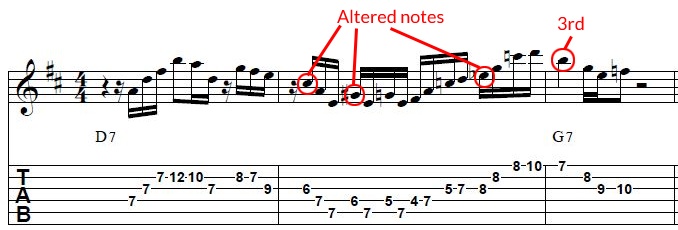
Blues Transitions
Sep 07, 2018
Approaching the IV Chord In a Blues
The goal of this series is to actually put a lick under your fingers. Here, there’s no more searching for ideas in the sea of jazz theory information. We’ll give stuff you need to play and be creative. In this lesson, we will be discussing approaching the IV chord in a blues.
Original Example
Today’s idea is taken from the September 2016 Tune of the Month Club for our “Blues Special”. Here, we will be discussing how to get some interesting sounds when approaching the IV chord in a blues.

How It Works
In bars 3 and 4 of the blues, we can choose to play material over that I chord, or we can set-up the IV chord. That is a matter of taste and what you think the moment is calling for. Or, as I like to put it, "is it time for the main course, or dessert?"
Anyway, enough food analogies!
A great way to set up the IV chord is by using the altered dominant scale. This scale is the 7th mode of melodic minor or, simply put, the melodic minor scale a half-step up from the root of your chord. We don’t use it verbatim here, but you will notice touches of it mixed in with our usual blues content.
The "color options" here are seemingly endless!
Download ALL of the licks here: "Approaching the IV Chord In a Blues"
Join our Community here.
More Examples
Now let’s get into some more examples.
Example A
Here is example A. Here we are using B melodic minor over Bb7, giving us that altered sound. We are also mixing in some chromaticism to approach specific chord tones.
HINT Learning to use chromaticism is a great way to add all kinds of fun colors to your playing!

Example B
Here is Example B. In this example, we are circling the 3rd of the chord (A) and playing mostly inside until we get to the B major arpeggio we are superimposing there to approach the Bb7. You can think of this the same way we would use a tritone substitution.

Example C
Here is Example C. In this example, we are adding the related ii arpeggio to the Bb7 to make Fm7 - Bb7. Then, we are using descending major arpeggios to get down to the 5th of our target chord. We’re not really thinking theoretically here.
Our ears make sense of the descending arpeggios because of their symmetrical nature. I suppose it's something like the way our brains make sense of the barrage of visual stimuli coming at us constantly.

Jump In
Now you try! I’ll take a chorus then comp for you so you can give it a shot.
Download ALL of the licks here: "Approaching the IV Chord In a Blues"
Join our Community here.
Thanks for joining us for Hands-On Jazz Guitar, Volume 14. Hopefully, you have some ideas that you can now use to approach the IV chord in a blues.
Please, ask us questions and give us feedback. We’re here for you. And if you liked this lesson, please subscribe to our YouTube channel where you can find many more like this!
You can also tell your friends and everyone else by sharing this lesson. Spread the word!









